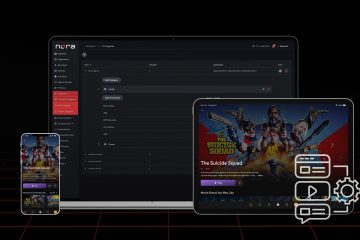OTT monetization is a complex and critical aspect of the video streaming landscape. To maximize revenue and ensure sustainability, operators should navigate multiple factors when choosing their content capitalization scheme. One of the most significant dilemmas is whether to opt for a single revenue source or embrace a hybrid monetization strategy.
With evolving consumer preferences, increasing competition, and fluctuating advertising landscapes, relying solely on one revenue source presents challenges. Due to the diverse preferences among consumers regarding payment for content, this narrow approach prevents operators from tapping into broader revenue potential.
This is where hybrid OTT monetization models shine. Let’s delve into the details of the topic.

Nora Dashboard
Hybrid Revenue Generation: Overview
The competitive pressure within the streaming industry, both locally and internationally, requires operators to innovate their service offerings to not only retain but also expand their subscriber base. This entails embracing a flexible monetization strategy that combines some or all of the following models at its core:
- SVOD (Subscription-based Video-on-Demand) offers consumers access to a comprehensive video library without interruptions from ads, through a recurring subscription fee.
- TVOD (Transactional-based Video-on-Demand) or PPV (Pay-Per-View) models require users to make a one-time purchase for individual pieces of content, ideal for those seeking specific, on-demand access, such as a live event.
- AVOD (Advertising-based Video-on-Demand) removes the payment process barrier, allowing viewers to access content for free while being subjected to advertisements during playback, offering a trade-off between cost and viewer engagement.
- Freemium models allow companies to attract a large user base by offering a free version of their product or service, and then monetize that user base by upselling premium features or content to a subset of users who are willing to pay for them.
Hybrid models (HVOD) often use an SVOD revenue model coupled with a limited AVOD tier, providing both ad-free and ad-supported streaming options to cater to different consumer segments. Alternatively, operators might integrate TVOD elements, allowing users to purchase premium content while offering a selection of free titles to entice engagement.
Increasing Demand For Hybrid OTT Monetization Models
The video streaming market has seen increasing demand for hybrid OTT models in recent years. This trend reflects a growing recognition of the importance of balancing multiple revenue streams while catering to diverse consumer preferences. A hybrid revenue-generating model allows operators to:
#1 Maximize Revenue Potential
A hybrid revenue model empowers streaming services to tap into multiple revenue streams simultaneously. By combining subscription fees, advertising revenue, and pay-per-view options, streaming platforms can maximize their earning potential while diversifying income sources.
#2 Enhance Market Penetration and User Experience
By adopting a hybrid monetization strategy that offers diverse purchasing options, operators cater to the varied payment preferences and financial capacities of consumers across multiple regions. This approach not only improves market penetration by attracting a wider audience but also enhances the user experience by facilitating greater personalization and accessibility.
As users select payment models that align with their needs, their satisfaction and engagement levels increase, fostering loyalty and reducing churn rates. Ultimately, such personalized experiences drive sustained growth for the platform, by ensuring both broad reach and deep user satisfaction.
#3 Optimize Content Costs
By introducing flexible monetization strategies, operators can diversify their revenue streams and generate additional income to cover content acquisition expenses. This flexibility enables operators to manage their expenditures better and cater to varying consumer preferences, thereby maximizing revenue potential.
The implementation of flexible monetization strategies empowers operators to optimize content costs, improve profitability, and enhance the overall value proposition for subscribers.
#4 Adapt to Market Dynamics
Hybrid OTT revenue models facilitate flexibility and experimentation by allowing streaming services to quickly test new revenue streams, adapt to changing market conditions, and respond to emerging trends and/or competitor strategies.
The ability to mix and match monetization models enables streaming services to scale their business more effectively, whether expanding into new markets, diversifying content offerings, or optimizing pricing strategies.
Nora 3.0 OTT Middleware – Empowering Operators with Flexible Monetization
As operators ourselves, we intimately understand the challenges operators face when choosing the capitalization scheme.
Nora 3.0, Setplex’s latest iteration of its future-proofed OTT middleware, is revolutionizing revenue management in the streaming industry. By offering a diverse array of OTT monetization models, Nora empowers operators to tailor their strategies to their business objectives and audience preferences.
Monetization options in Nora
With Nora Middleware, operators navigate the dynamic landscape of monetization with ease. Whether adjusting subscription plans, experimenting with advertising-based models, or exploring hybrid OTT approaches, Nora ensures that operators have the autonomy to refine their revenue strategies at their convenience.
At the core of Setplex’s offering is a unique advantage – it places the reins of revenue management firmly in the hands of operators. Through its flexible monetization features, Nora Middleware becomes more than a platform; it becomes a strategic partner in the journey of optimizing revenue and delivering compelling content to a dynamic audience.
Find out more information about Nora 3.0.
Download the Nora 3.0 spec sheet.



0 Comments